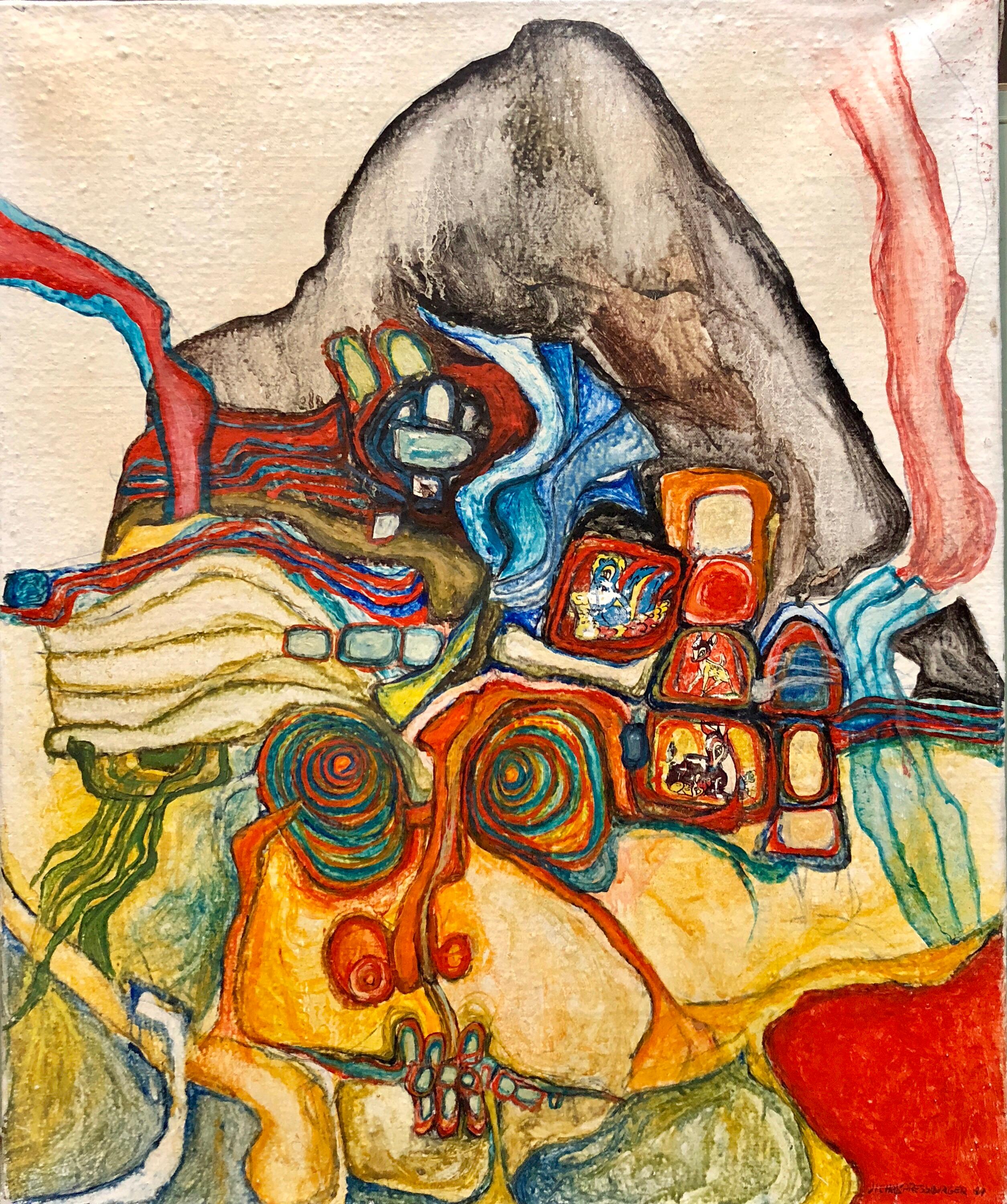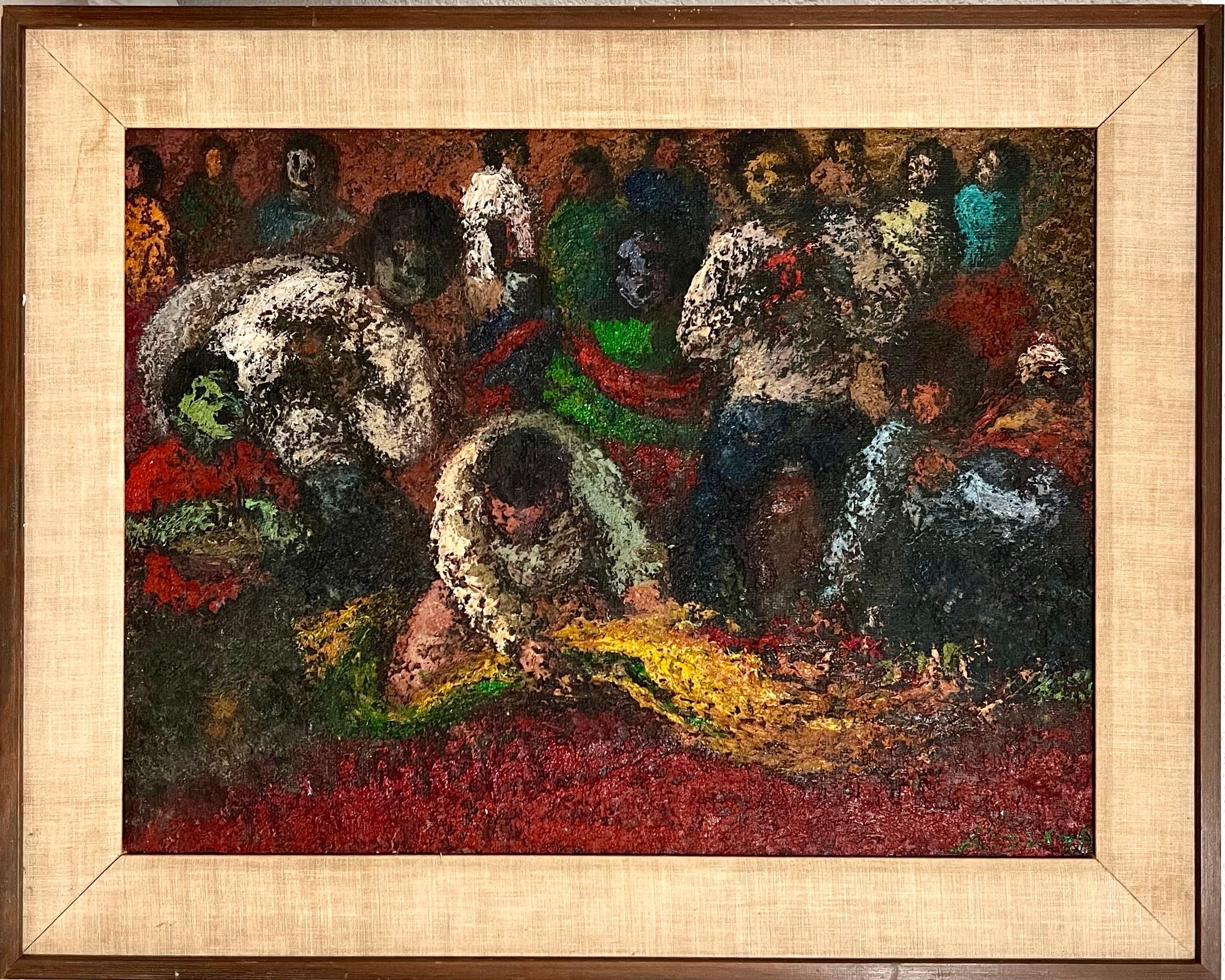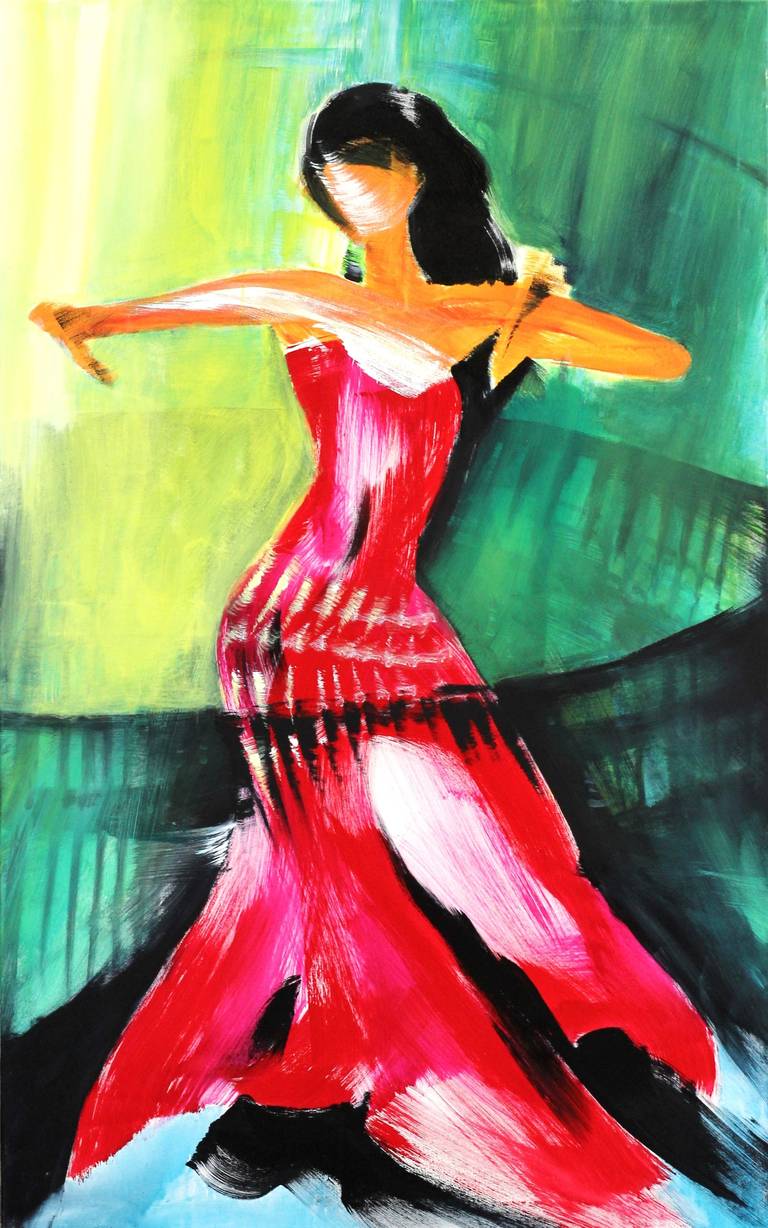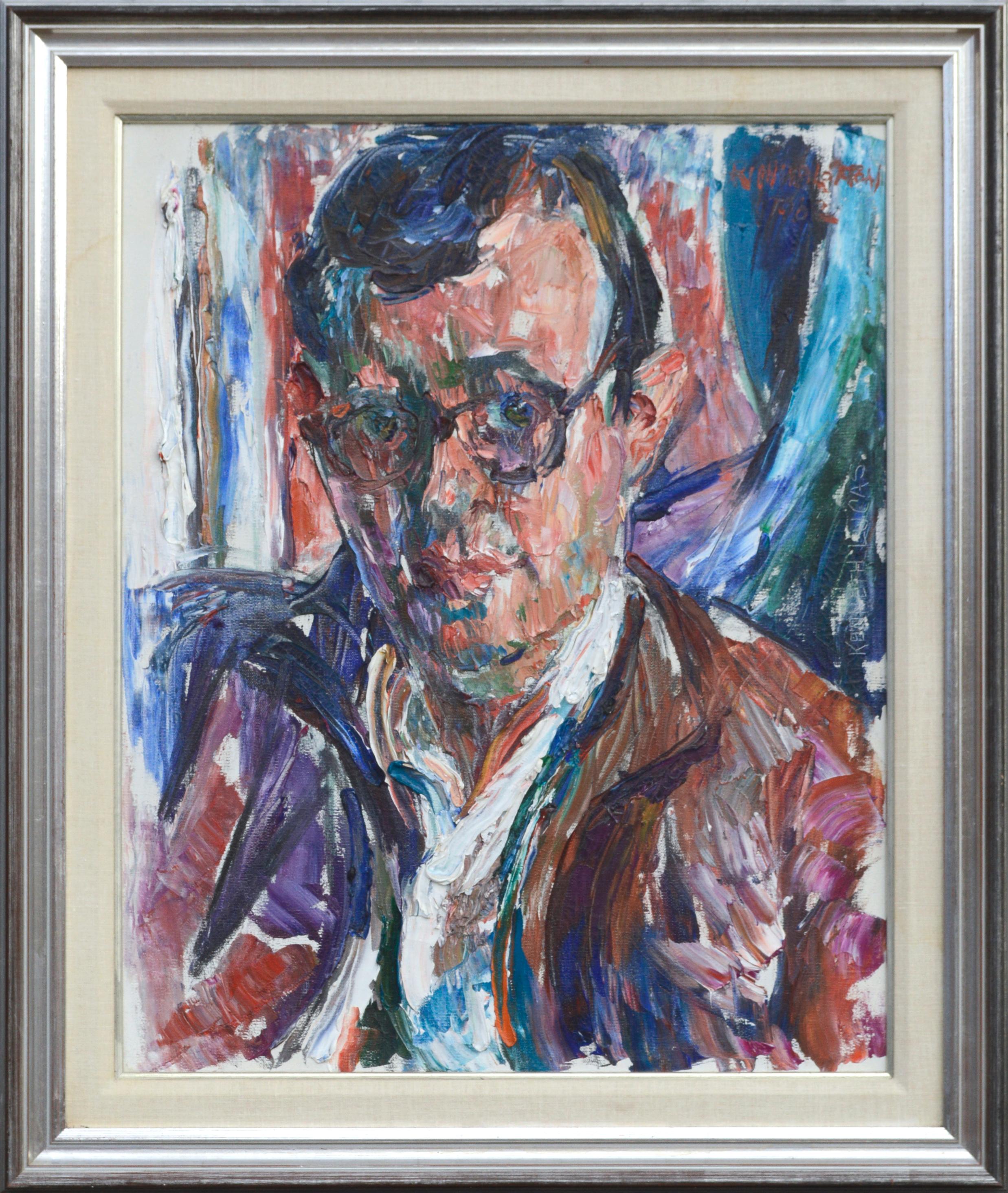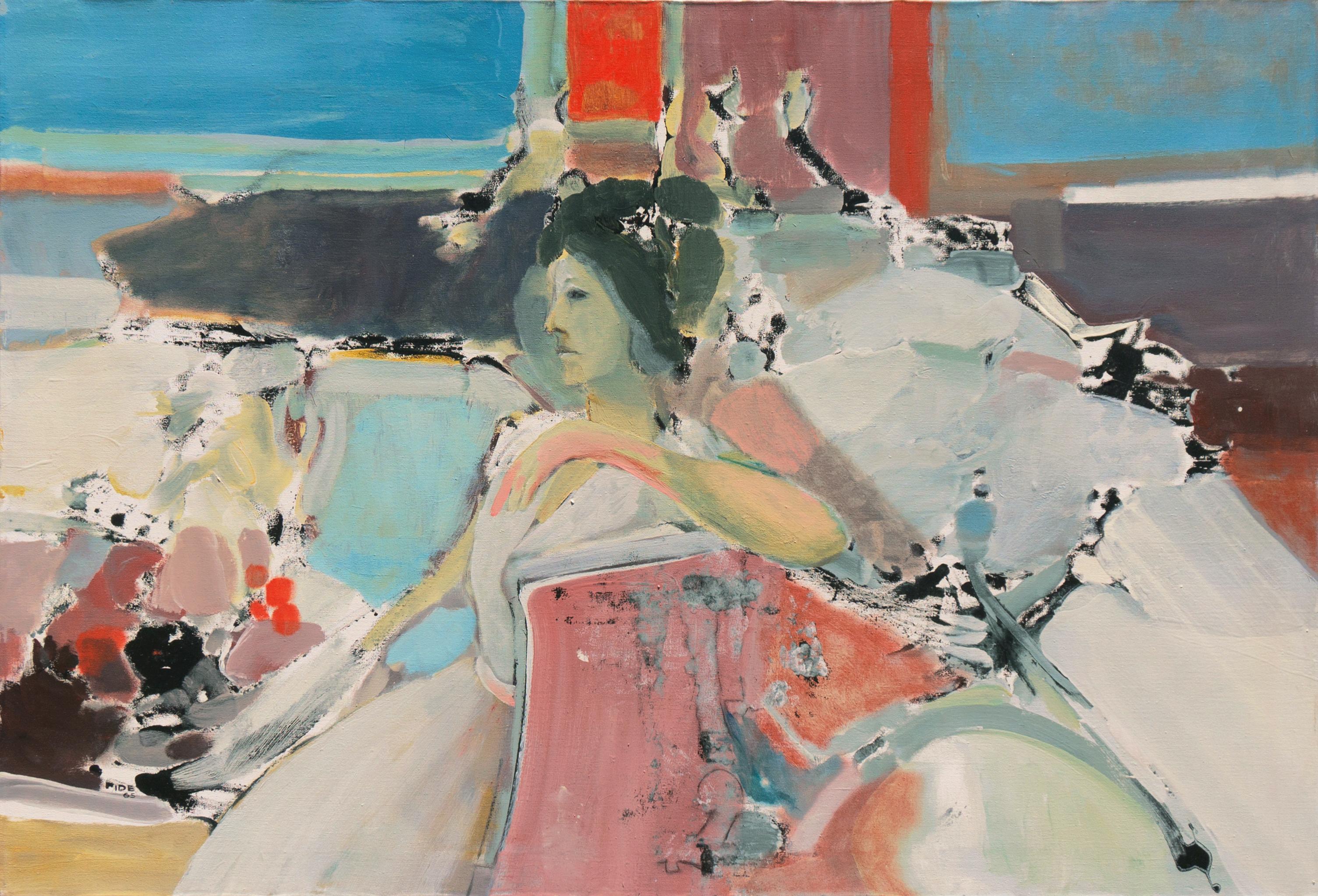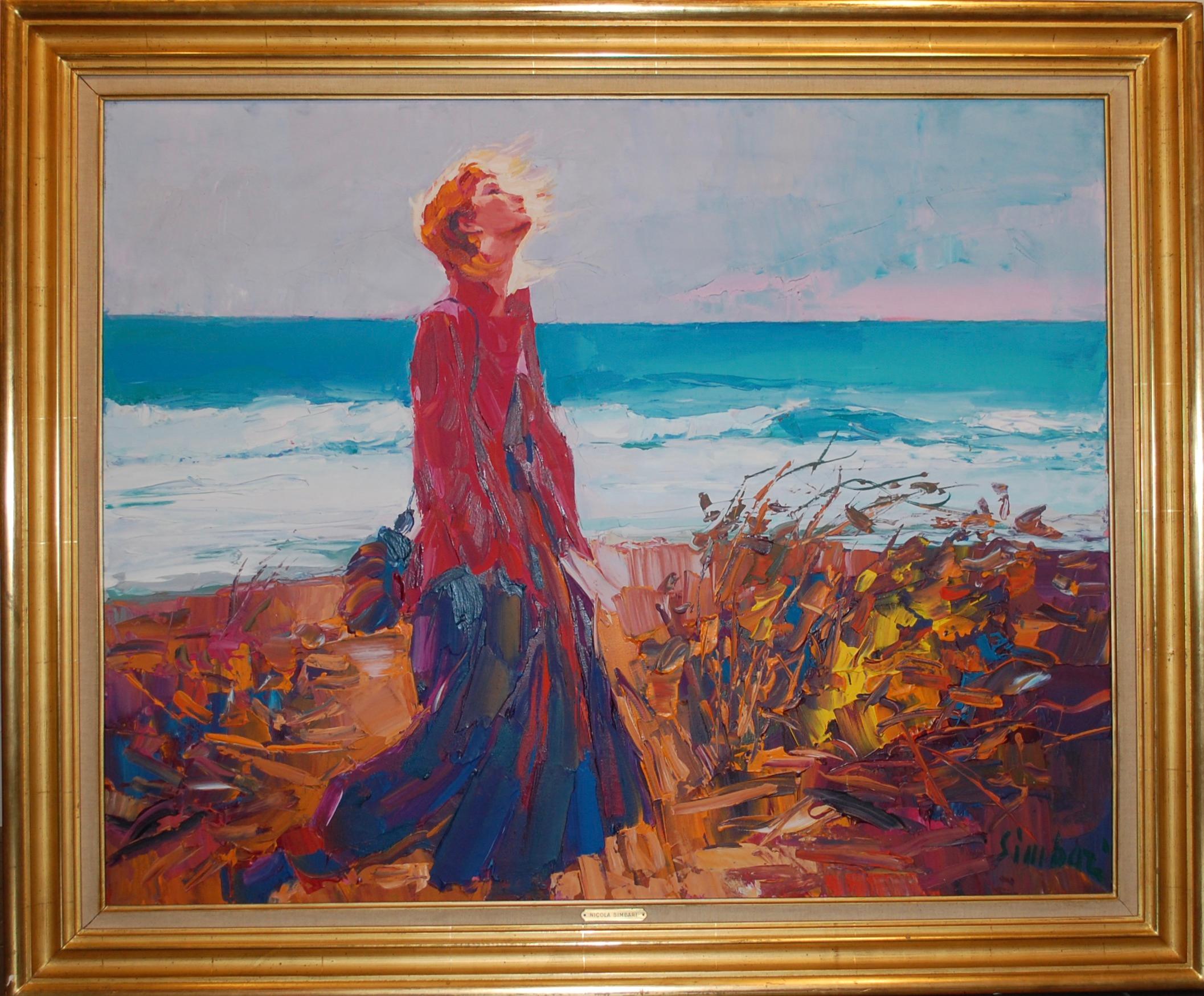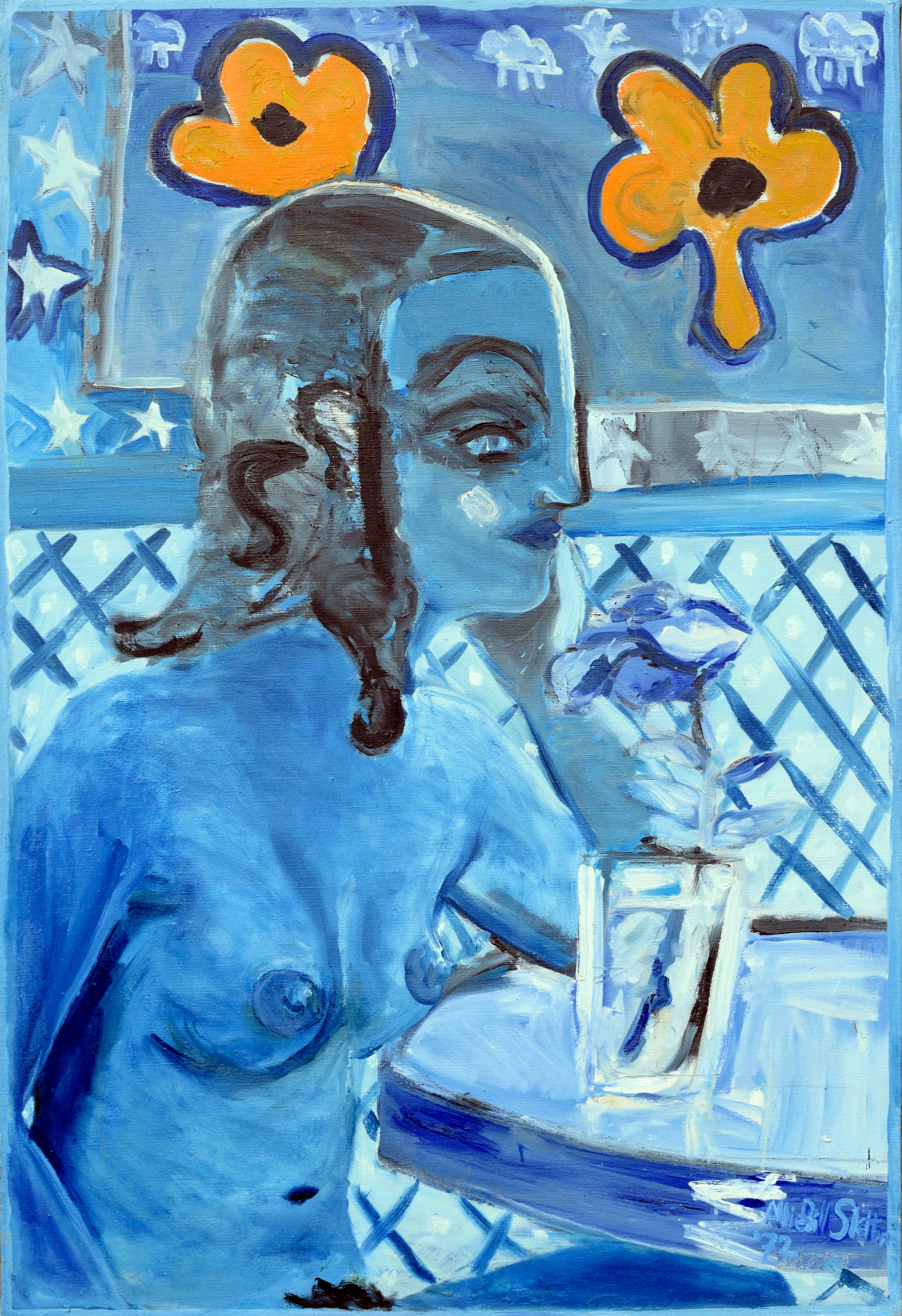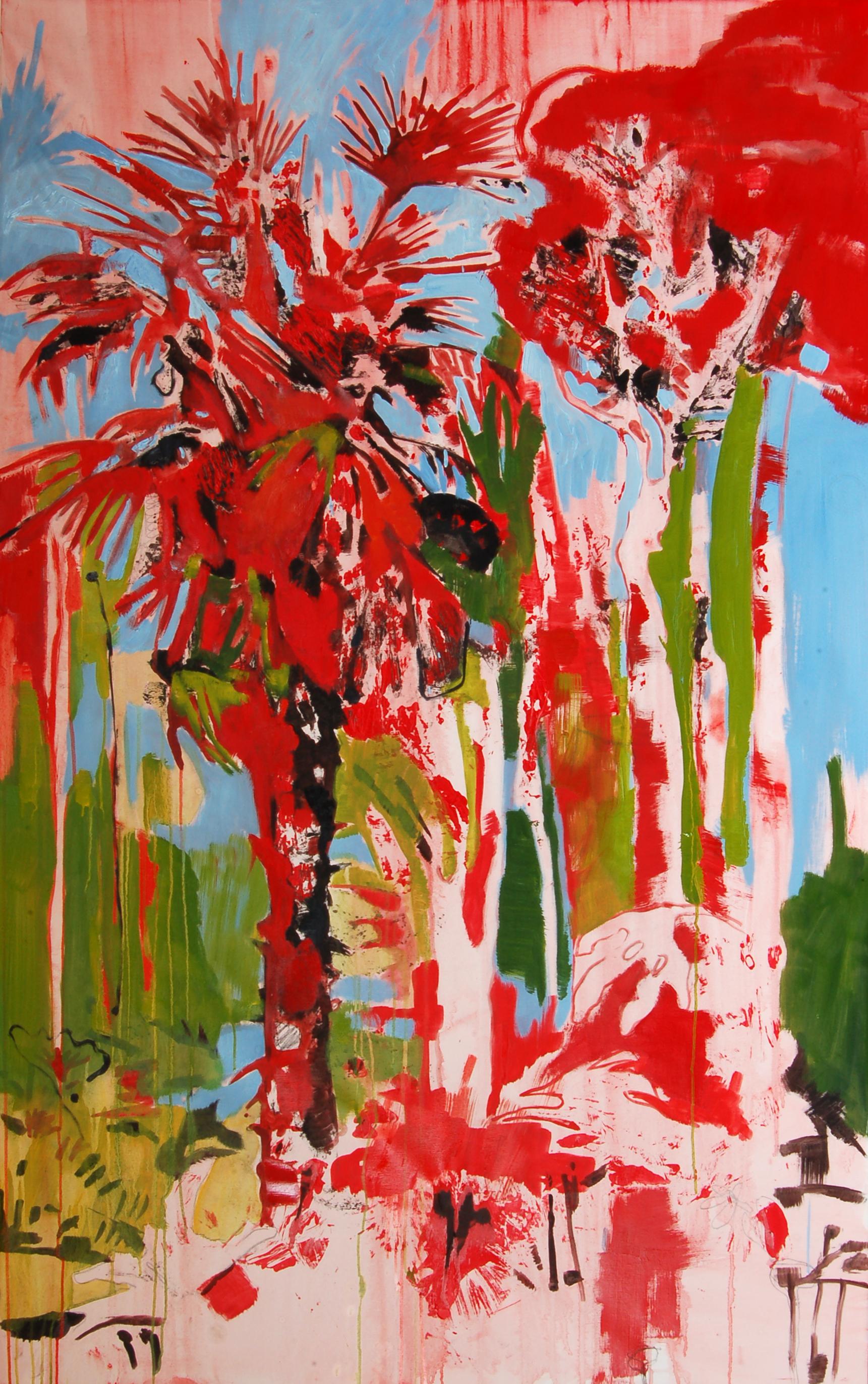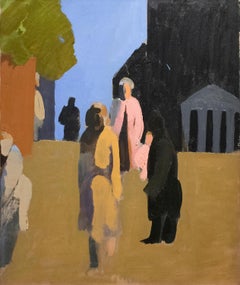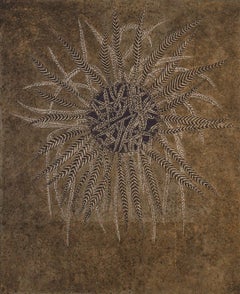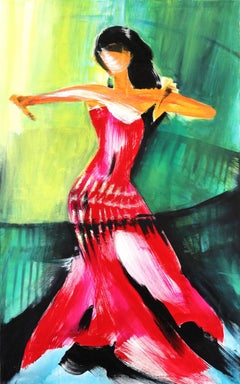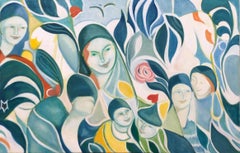
What Do They Say (Horizontal Expressionist Painting of Abstract Figures in Blue)
Want more images or videos?
Request additional images or videos from the seller
1 of 7
Marion VinotWhat Do They Say (Horizontal Expressionist Painting of Abstract Figures in Blue)2017
2017
About the Item
- Creator:Marion Vinot (1949, French)
- Creation Year:2017
- Dimensions:Height: 28 in (71.12 cm)Width: 44 in (111.76 cm)Depth: 0.5 in (1.27 cm)
- Medium:
- Movement & Style:
- Period:
- Condition:
- Gallery Location:Hudson, NY
- Reference Number:1stDibs: LU2271135313
About the Seller
5.0
Platinum Seller
These expertly vetted sellers are 1stDibs' most experienced sellers and are rated highest by our customers.
Established in 1991
1stDibs seller since 2013
544 sales on 1stDibs
Typical response time: 2 hours
More From This SellerView All
- Tompkins Square (Abstract Figurative Urban Landscape Painting of New York City)By William ClutzLocated in Hudson, NYAbstract Figurative city landscape painting of Tompkins Square in Manhattan "Tompkins Square" painted by William Clutz in 1960 Oil on canvas, signed at bottom 30 x 25 inches, 30.5 x...Category
1960s Abstract Figurative Paintings
MaterialsCanvas, Oil
- Untitled: Abstract Painting of Decorative Leaf Motif in Bronze & GoldBy Frank FaulknerLocated in Hudson, NYAbstract acrylic painting of a decorative fern motif with a patina of dark gold and bronze "Untitled (Hudson, NY)", painted by Frank Faulkner, c. 2007 60 x 48 x 1.5 inches, acrylic on wood panel Wire backing for secure installation Signed, verso This abstract painting was made by Frank Faulkner in 2007. This composition features a decorative leaf motif that radiates outwards from the center. The design is constructed with built up acrylic which creates an impasto surface, similar to a relief. The painting is unframed and the edges reveal drips from the layers of paint applied the surface. It's in excellent condition and ready to hang as is. More about the work: Revered artist and designer Frank Faulkner was well known among locals for his handsome restorations of prominent historic proprieties on Hudson’s Warren Street and beyond. It is apparent that the applied arts like classical architecture, Persian rugs, chinoiserie, and Samurai armor greatly influenced his own painting style. His technique employs a rich variety of texture and color evoking the qualities of mosaics and tapestry. According to the artist, the paintings on view experiment with representational imagery. Central designs are positioned in spaces suggestive of landscapes where the settings utilize horizon lines and natural, atmospheric light. Organic compositions take their cues from natural flora endowed with fantasy, which intentionally disorient the viewer. These works present the argument for the imaginary versus the empirical world. About the artist: Born in Sumter, South Carolina in 1946, Frank Faulkner received his B.F.A. from the University of North Carolina in 1968, Phi Beta Kappa, and his M.F.A. from the same institution in 1972. Faulkner’s work quickly won him numerous grants and awards, including an individual artist grant from the National Endowment for the Arts in 1974. He was selected for the Whitney Biennial in 1975, which prompted him to settle in New York. There, he came to the attention of Dorothy Miller, Curator Emeritus of the Museum of Modern Art with a legendary eye for new talent. Since then, Faulkner has continued to garner acclaim and awards. He has been featured in dozens of one-person exhibitions (not to mention group exhibitions) in this country, as well as in Japan, Switzerland, and Germany. Faulkner’s work is owned by leading museums (the Smith College museum in Northampton, Massachusetts, for example, the National Museum of American Art and the Hirshhorn in Washington, D.C.) and by renowned collectors such as Nelson Rockefeller, Baron Leon Lambert, Phillip Hanes and Abba Eban. What a viewer first notices is the sheer elegance of the pieces, no matter what materials Faulkner uses—metal, wood and fabric as well as canvas and paper. Obvious, too, is the artist’s originality. Faulkner belongs to no school. His work is patterned but is far too intellectual to qualify as so-called “pattern art,” which mainly strives to be merely pretty. Rather, he paints in his own highly organized way, filling the surface without being excessive or boring. Faulkner sets up a system, say, of dots or dashes, then subtly changes the visual rhythms in order to add life and surprise—what he calls “the gymnastics of seeing.” He works and reworks the surfaces of his canvases, often laying down one thin layer of slightly reflective gold, silver or bronze paint upon another until the final work seems to glow with inner light. John Ashbery, a leading critic and poet, has likened Faulkner’s art to minimalist music, which achieves both simplicity and beauty from its obsessive repetitions. The critic Carter Ratcliff describes it more simply as “brilliant artifice.” Faulkner’s current work, a series of paintings on paper, continues and deepens this exploration of the relationship between wrought surface and changing light. Another striking aspect of the work is the influence of the decorative arts. Faulkner has made some paintings on wood that stand independently and fold open like screens. Other pieces resemble large tapestries, and yet others take their inspiration from Art Nouveau inlays...Category
Early 2000s Abstract Abstract Paintings
MaterialsCanvas, Oil
- Nike X: Figurative Abstract Black & White Painting of Greek Goddess NikeBy David Dew BrunerLocated in Hudson, NYFigurative abstract style black and white acrylic and graphite painting of the Greek Goddess, Nike, "Winged Victory of Samothrace" "Nike Descending...Category
2010s Modern Figurative Paintings
MaterialsArchival Paper, Oil
- Nike Descending IV: Figurative Abstract Framed Oil Painting Greek Goddess NikeBy David Dew BrunerLocated in Hudson, NYFigurative abstract style black, white, and blue acrylic painting of the Greek Goddess, Nike, "Winged Victory of Samothrace" with an antique wood f...Category
2010s Modern Figurative Paintings
MaterialsArchival Paper, Acrylic
- The Veil (Ethereal Figurative Abstract Watercolor Painting in Dark Blue)By Susan Hope FogelLocated in Hudson, NYTonalist style, abstract figurative watercolor by Susan Hope Fogel watercolor on Arches heavy-weight paper 30 x 44 inches, diptych of two sheets measuring 30 x 22 inches each 35.5 x...Category
2010s Contemporary Figurative Paintings
MaterialsGouache, Watercolor
- Gio Taking Off His Singlet (Portait of a Young Wrestler by Mark Beard)By Mark BeardLocated in Hudson, NYAcademic style figurative portrait painting of a handsome young man against a grey background "Gio Taking Off His Singlet", By Mark Beard as Bruce Sargeant (pseudonym in homage to the fashion photographer, Bruce Weber, and figurative painter, John Singer Sargent) 14 x 11 inches 18.5 x 15.5 inches framed Excellent condition Signed by the artist, upper left "B. Sargeant" This vertical, portrait painting of a young man was made by Mark Beard under his fictitious artistic persona, Bruce Sargeant. Painted in a modern Academic style, the handsome man is posed stoically against a pale grey background as he gingerly removes his wrestling singlet...Category
2010s Academic Portrait Paintings
MaterialsCanvas, Oil
You May Also Like
- French Jewish Post Holocaust Abstract Painting Manner of Hundertwasser Art BrutBy Jichak PressburgerLocated in Surfside, FLJichak Pressburger, Painter. b. 1933, Bratislava, Czechoslovakia. A concentration camp survivior. Came to Israel aboard the ship, "The Exodus". 1964 Went to Paris. In 1979 Returned as new immigrant. Education Tel Aviv University, B.A. in art, with Marcel Janco and Isidor Ascheim at Avni art school. Beaux Arts, Paris with Professor Coutaud. Itzchak Pressburger Stays in Paris from 1963 – 1979, Resident of the “Cité des Arts” 1969-1972. Lives and works in Jerusalem since 1979. One-Man Exhibitions 1963 Gallery Dugit, Tel-Aviv 1968 Cultural Center Enkhuizen, Netherlands 1968 Gallery Zunini, Paris (chosen by the art critic of « Opus : Jean-Jacques Lévèque) 1970 Gallery Zunini, Paris 1973 Gallery Maitre Albert, Paris. Cultural Center Verfeil sur Seye, France 1974 Gallery Maitre Albert, Paris 1976 Gallery Mundo, Barcelone 1980 Artists’ House, Jerusalem 1981 Gallery Alain Gerard, Paris Group Exhibitions 1966 Rathaus Charlottenburg, Berlin. (The first show of Israeli painters in Germany Artists Center of Silvarouvres, Nantes, Ffance XXXth Salon of Finances at “l’Hotel des Monnaies”, Paris 1969 Maison de Culture, Le Havre, France 1968 Gallery Zunini, Paris (chosen by the art critic of « Opus : Jean-Jacques Lévèque) Salon « Grands et Jeunes d’Aujourd’hui », Paris Museum of Fine Arts, Nantes, France Cultural Center Vitry, France Gallery Il Giorno, Milan Cité des Arts, Paris 1972 Salon “Grands et Jeunes d’Aujourd’hui”, Paris Salon de Mai, Paris 1973 Städtische Galerie, Siegen, Germany 1974 Jewish Cultural Center, Paris Publicis, Paris 1975 Réalitiés Nouvelles, Paris 1976 Salon de Mai, Paris 1977 “Perspectives Israeliennes”, Grand Palais, Paris 1981 Salon Alain Gerard, Paris 1984 Artists’ House, Jerusalem Publication 1990 Haggadah Yom Kippour (Hebrew/French) Abraham Bliah (private edition), Paris Acquisitions 1968 The City of Paris 1972 The State of France The Yitzchak Pressburger artist was born in Bratislava – known for centuries by its German name of Pressburg – but the outbreak of World War II found him and his family in Prague. His father realized they had to escape from the Nazi occupiers and tried to get the family across the border into Hungary. However, they were caught near the crossing point, arrested and incarcerated overnight at the nearby railway station. The Czechs put them on a train to Hungary early the next morning. That was their first miracle in their quest for survival. They survived with relative ease until late 1943, when the father was taken away to a forced labor camp. He subsequently died in a death march. Things became even more precarious in early 1944, when the Holocaust made its full-blown presence felt in Hungary. “It wasn’t the Germans, it was the Hungarian Nazis who did the dirty work,” Pressburger points out. The family lived in so-called “safe houses” that were protected by Switzerland, Finland and Sweden. The havens were dismantled in late 1944, and the Pressburgers moved into one of the two Jewish ghettos in Budapest. The Nazis had found two houses with Jews, including the one where we had been, and took them all out and shot them next to the Danube. Today there is a monument by the river [called Shoes on the Danube Bank]. We should have been with the Jews who were killed by the river,” he says. After the war, Pressburger and his siblings were farmed out to various orphanages run by the Jewish Agency, and things took a decidedly better turn. “We finally had food to eat,” he recalls. “After a while we were put on trains that were protected by the Jewish Brigade [of the British Army], and we were sent to Austria, and then to Germany.” “My uncle was a famous artist, and I learned a lot from him,” he says. While in Germany, Pressburger also took some lessons with a local artist. His mother managed to get him and two of his siblings berths on the Exodus, which set sail from Marseilles for Palestine in July 1947. Pressburger was 13 at the time and clearly recalls the aborted attempt to get to the Promised Land. “It was so crowded on the boat. This was a ship that was made to ply rivers in the United States, with a few hundred people on board, and we had over 4,500 passengers crammed in.” As we know, the British prevented the Exodus from docking in Palestine, and the passengers were shipped – in three far more seaworthy vessels – back to France. After the French government refused to cooperate with the British, Pressburger and the others found themselves back in Germany. The teenager eventually made it here in 1948, just one month before the Declaration of Independence. After a short furlough in Tel Aviv, during the first lull in the fighting in the War of Independence, he moved to Kibbutz Kfar Ruppin, where he worked in the cowshed. All the while he continued feverishly drawing and honing his artistic skills, which he says came in handy when he joined the IDF. After completing his military service, which included a spell as one of the founding members of the Flotilla 13 naval commando unit, he worked in Sdom for a while at the Dead Sea Works before starting his formal arts training in earnest. I was in the first group of students at the Avni Institute [in Tel Aviv],” he says. “There was quite a famous bunch of students and teachers like Moshe Mokadi and Isidore Ascheim and Aaron Giladi.” In such illustrious company, one might have thought Pressburger was set to unleash his burgeoning talents on art connoisseurs across the globe, but it was a while before that happened. Pressburger arrived in the French capital in 1964 and spent close to 15 years there, with a short interlude in Germany, before returning to Israel. His time in Paris was a professionally rewarding period of his life, and he also found love. “[Avni Institute teacher] Yochanan Simon gave me the name and address of a French-Israeli family in Paris, but when I got to the house, a young woman opened the door and told me the family was on vacation in Israel,” he explains. Despite missing his expected hosts’ welcome, he and the German-born young lady who greeted him soon fell for each other, and romance quickly led to wedding bells. By all accounts, Pressburger did well in Europe. He secured a rare three-year berth at Cité Internationale des Arts, where artists are normally provided with accommodation and studio space for between two months and a year. He was also accepted to the prestigious Beaux Arts academy of fine arts, mounted solo exhibitions, and took part in group shows all over Europe. One of these last was a group exhibition at Rathaus Charlottenburg in Berlin in 1966 – the first exhibition of Israeli artists in Germany after the Holocaust. When he arrived in Berlin, the lineup for the Israeli show was already signed and sealed, but somehow his work came to the attention of the German culture minister, who arranged for him to join. The Pressburgers’ year-long sojourn came to an abrupt end following an encounter he had one day while walking through the crowded Berlin streets...Category
1960s Expressionist Abstract Paintings
MaterialsCanvas, Oil
- Peruvian Expressionist Oil Painting Miguel Aybar Modernist Latin American ArtLocated in Surfside, FLDimensions: (Frame) H 28.5" x W 35.5" (Painting) H 22" x W 30" Miguel Ángel Aybar Llauca, an artist specializing in expressionist painting, was born in Huancavelica and lives in the city of Ica where he began drawing from a very young age, drawing from its beautiful valleys and customs. In 1970 he began his studies in Drawing, Painting and Sculpture at the Regional School of Ica. He is a graduate of the National Superior Autonomous School of Fine Arts of Peru (1971-1976) with honorable mention, forming the promotion "Juan Manuel Ugarte Eléspuru". "Iqueño Expressionism" is the title of the exhibition that will be available to the public from May 25 to June 13 in the "Paracas" Room of the "Adolfo Bermúdez Jenkins" Regional Museum of Ica. Av. Ayabaca block 8°. Miguel Angel Aybar is a painter who characterizes expressionism in Ica without a doubt. His songs speak of longing, and secret friendships with the hurango, the palm tree of Huacachina or the silent and still sand of Ica. His work is primarily characterized by color. The contrasts between the intense dark contrasted with the radiance of reds, oranges, yellows or greens, achieve a positive effect on the observer. Its warm tones reach high levels like an Ica sun at noon. However, among those quasi Servulian colors , Andean prints maintain their presence. Hats, ponchos or skirts hidden from a root bound by blood or memories. The perfect textures of his works give him the seal, the personality that characterizes a curdled and experienced Aybar who no longer needs to dialogue with the brush; they just flow, hand and brush. When entering the exhibition hall, you do not need to read the signature, he is an Aybar. There is no room for confusion. Although there are not a few artists from Ica who use these boiling tones, and I translate it as a tribute to that Sérvulo that touches you in the depths of your being, if you are an artist and you live in Ica, you want to be possessed by the ghost of the disturbing Sérvulo Gutiérrez turned legend. Servulus still catches the spectator being absorbed, as if observing a volcano, fearing that it might erupt, but with an inexplicable delight that he stops you next to him and captures you. However, Aybar no longer needs Servulo's shadow, he has gained an important space in the artistic world of Ica. He is an artist and a close friend of poets and musicians. Painter recognized by the Ica society and deserving of all the medals and recognitions by the different institutions. He not only paints with mastery, as Alberto Dávila predicted, when he said that his maturity would give him the position that corresponds to him. He now sings in public to the delight of his closest friends. Ica recognizes him as a son and has given him the place that corresponds to this remarkable painter whom I congratulate. DATA ABOUT THE ARTIST Miguel Angel Aybar Yauca, was born in 1952 in Huancavelica. He has lived in Ica since he was very young; he began his art studies at the Ica Regional School of Fine Arts. He later moved to Lima to study at the National Autonomous School of Fine Arts of Peru from where he graduated in 1976. His teacher Alberto Dávila described him as: a restless, imaginative young man with a sober and dramatic color. His forms acquire poise and great eloquence . Aybar also had the painter Carlos Aitor Castillo...Category
20th Century Expressionist Figurative Paintings
MaterialsCanvas, Oil
- Dancer in Red - Large Colorful Expressive Figurative Oil Painting on CanvasBy Bettina MauelLocated in Los Angeles, CABettina Mauel expresses vitality and sensuality in her abstract and figurative paintings. “I paint what I experience,” she articulates. “This includes landscapes, dancers, and peop...Category
21st Century and Contemporary Expressionist Abstract Paintings
MaterialsCanvas, Oil
$2,200 Sale Price21% Off - Devotion and LoveBy Darren LeGalloLocated in West Hollywood, CAAn original oil on canvas by American artist Darren LeGallo. “Devotion and Love”, was exhibited in our recent premiere solo exhibition of American artist Darren LeGallo, “Darren LeGa...Category
Expressionist Figurative Paintings
MaterialsCanvas, Oil
Price Upon Request - Mid-Century Expressionist Portrait of Kenneth Lucas by Richard Lofton, 1962By Richard LoftonLocated in Soquel, CAColorful and bold impasto oil portrait with dynamic, expressive brushstrokes by Richard Lofton (American, 1908-1966). The name of the sitter, Kenneth Lucas, is inscribed along the ri...Category
1960s Expressionist Abstract Paintings
MaterialsCanvas, Oil
$2,120 Sale Price20% Off - Blue Scarfed Woman - Figurative AbstractBy Michael William EgglestonLocated in Soquel, CABold abstract figurative of a figure in a blue scarf by San Francisco artist Michael William Eggleston (American, 20th c.)From a collection of his works. Si...Category
Early 2000s Expressionist Figurative Paintings
MaterialsCanvas, Oil
$1,200 Sale Price20% Off
Recently Viewed
View AllMore Ways To Browse
From The 60s
Canadian Art Galleries
Contemporary Hold
Established Artists Paintings
1987 Art
Japanese Paintings By Artist
Canadian Artists Painting
Painting Red And Black
Art Of Australia
Dynamic Painting
Asian Artist
Original Paintings Of Italy
Emotions Abstract
San Francisco Sign
Affordable Art
New York Robert
One Of A Kind Gallery
California Abstract Paintings
